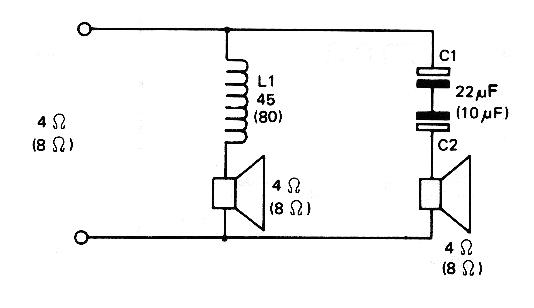Why do I always have to connect a capacitor with the tweeters in series? What happens if I plug them directly into the amps output?
The tweeters are built to reproduce the high-pitched, high-frequency sounds, usually above 3 kHz. If they receive signals of lower frequencies, these signals will not be reproduced, being transformed into heat in the coil of the speaker or in its circuit. In addition, the tweeter has a very low impedance for these signals, functioning as a true short circuit to the output of the amplifier that will be overloaded. Thus, when connecting a tweeter to the output of an amplifier, we must take care that it does not receive the signals of the frequencies that it can not reproduce, that is, medium and low frequencies. The capacitors have exactly the property we want. They have a reactance that decreases with frequency, that is, they offer an opposition to signals of low frequencies, but they allow to pass more easily signals of high frequencies. This means that by bundling in series with the tweeters a suitable value capacitor, it prevents the passage of undesirable signals and letting only the trebles pass. Since we are working with audio signals, the capacitor needs to be depolarized. This can be achieved with two common electrolytes in opposition, as shown in the figure that we have a typical circuit for tweeter. The L1 inductor helps prevent the tweeters from being played back to the larger speaker.





